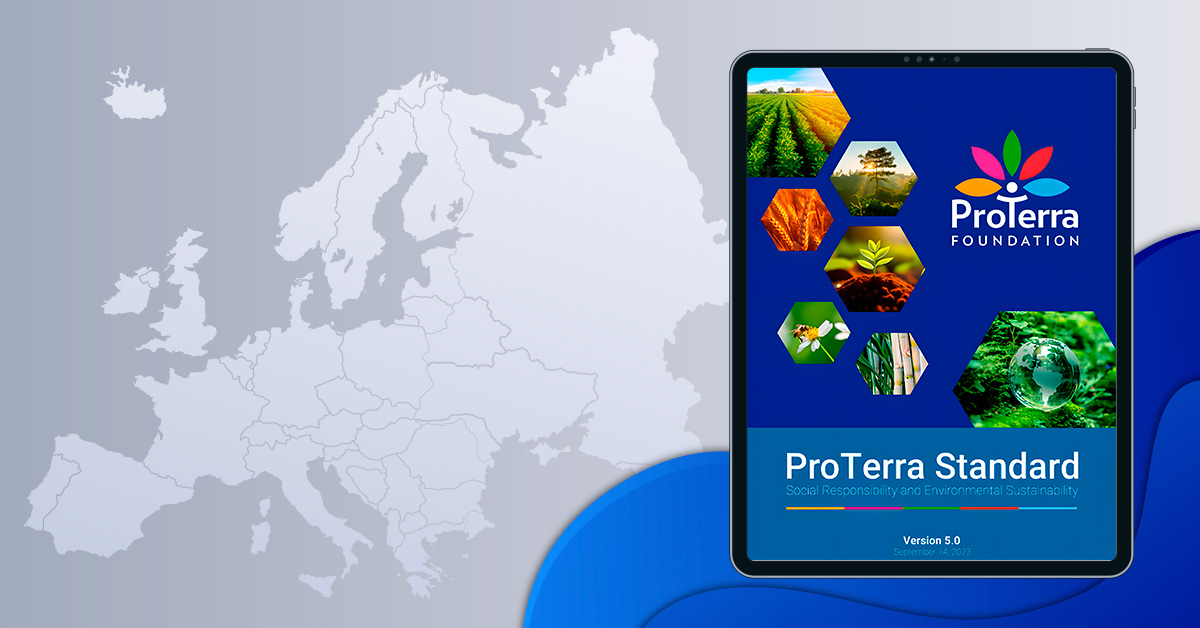ProTerra Standard V5 and the European Regulation on Deforestation-free Commodities (EUDR)

The ProTerra Standard version 5.0 for Social Responsibility and Environmental Sustainability (PT V5) has been benchmarked against the EU Regulation on deforestation-free commodities[1] (EUDR) in January 2025.
Although several articles of the Regulation are not applicable as they relate to the obligations of member states and competent authorities or are administrative matters or internal responsibilities of organisations, PT V5 strongly adheres to the said Regulations for all the applicable articles.
In addition, the ProTerra Foundation has issued specific mandatory guidance for organisations, certification bodies and auditors to support the implementation and assessment of compliance with the EUDR for those specific commodities covered by the regulation and those situations where the ProTerra requirements do not appear to be explicitly related to the EUDR.
A summary of the results and applicability of the different EUDR articles is presented in Table 1.
Use of PTV5 as a tool for supporting compliance with EUDR
ProTerra Standard is a relevant tool to support organisations in achieving and maintaining compliance with regulations and fulfilling stakeholders’ expectations.
This is achieved twofold: firstly, ProTerra certification enables organisations to understand their supply chain risks and compliance gaps, helping them prepare for the due diligence process. Secondly, it is a relevant tool for assessing and mitigating risks. This is achieved by preparing and implementing a Corrective Action Plan for the identified non-compliances.
ProTerra Certification audits are conducted by qualified third parties who conduct an objective assessment of the supplier´s operations, including a documentation review, a review of satellite imagery for information on potential deforestation, an on-site inspection, and interviews with relevant personnel and stakeholders as needed. ProTerra requirements address the key environmental and social risks associated with agricultural activities and food and feed processing, and therefore, compliance with ProTerra is considered a risk mitigation measure. Note that it is mandatory under ProTerra that the suppliers of a certified organisation also meet the ProTerra requirements.
Additionally, in some respects, PT V5 requirements go beyond the requirements of the EUDR, notably by requiring:
- a stricter cut-off date. Under ProTerra, areas cannot have been cleared or converted into agricultural areas, or used for industrial or other commercial purposes, after 31 December 2008;
- the protection of vegetated areas beyond the definition of forest, such as wetlands; swamps; floodplains; steep slopes; savannahs and others as defined by the High Conservation Values Resource Network (including, for example, areas of cultural heritage);
- that deforestation is to be avoided in the entire farm area and not just in the areas where agricultural activities take place;
- the existence of a Biodiversity Management Plan at farm level.
- that organisations seeking certification must take effective action to restore degraded areas and/or provide suitable compensation for the lost ecosystems and their values if areas have been converted between 1 January 2009 and 31 December 2020. Please refer to the ProTerra Procedure for Compensation and Restoration.
Table 2 details the adherence between ProTerra V5 and the applicable articles of the EUDR.